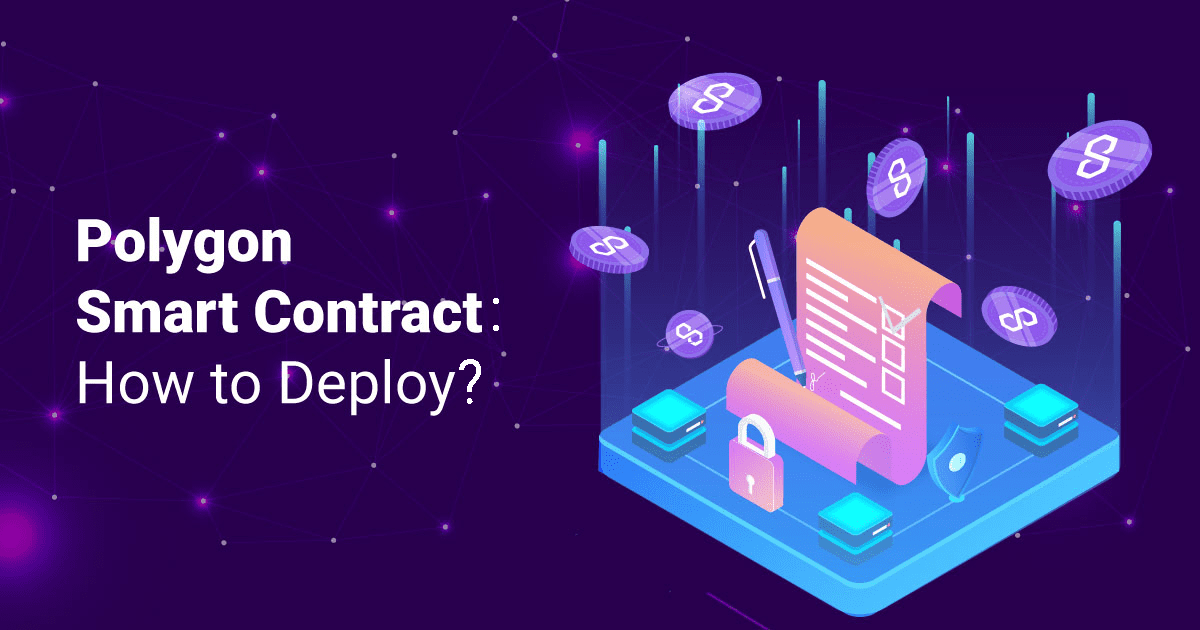2022 has been a year of building for Polygon–making Ethereum faster and cheaper for everyone.
Many budding blockchain users wish to see their contract on a live production blockchain. However, the expensive gas fees of Ethereum make them think twice! Enter Polygon–a layer 2 Ethereum solution that offers cheaper transaction costs.
Quite inquisitive like others, you are probably on the lookout for the answers to how to deploy a smart contract to Polygon. If yes, then we’ve got you covered. This post will briefly give you an overview of the steps to do it yourself. But make sure you also go for a Polygon smart contract audit to eliminate all the vulnerabilities from the contract.
So, let us begin.
Steps To Deploy A Smart Contract To Polygon
It will be easier to understand if we break the process into four easy steps, which are as follows:
Step 1: Connect your MetaMask wallet to the Polygon Mainnet
Connecting the MetaMask wallet to the Polygon network is a simple 3-step process, which follows:
- Open MetaMask
- Click on “Add Network”
- Enter the following values
Step 2: Add Polygon tokens to the wallet
Remember that the primary aim is to deploy your contract to the Polygon Mainnet. You’ll have to pay the transaction costs associated with real tokens. The Polygon network uses MATIC tokens. So, you will need to add them to your wallet to pay the deployment fees.
You can do it in two ways. Either you can purchase $MATIC on an exchange and then transfer it to your MetaMask wallet, or you can also use a faucet for this.
Once you are done adding $MATIC tokens to your Metamask wallet, it is going to look something like this.
Step 3: Create a Polygon node/app
- Go to the Alchemy dashboard and then click on “Create App.”
- Enter a name/description.
- Set the “Environment” to “Production,” “Chain” to “Polygon,” and “Network” to “Polygon Mainnet.”
- Click on “Create App” to complete the process of creating the Polygon node. You will be redirected to the Alchemy dashboard.
- Click on the “View Key” and then copy the URL.
Step 4: Run compile/deploy commands
So, we’re almost there. Just a few steps to go!
- Firstly you need to compile the smart contract.
- Next, run the deployment script for deploying it to Polygon.
After running the above commands, you will see the following output.
You just successfully compiled and deployed the contract to the Polygon Mainnet. All these transactions are broadcasted, recorded, and verified on the real Polygon ledger!
See your NFTs
Now that you’ve done all the hard work you could, it is time to see what you’ve minted. Search the contract address on OpenSea.io
Notice that your smart contract is deployed and minting NFTs on a live chain!
Conclusion:
All your hard work has paid off, and you are finally live on the Polygon Mainnet! So, you can now say you’ve finally deployed a smart contract to a real, live, distributed ledger–Polygon.
Congratulations on adding another feather to your hat as a Web3 developer.
Now that you are through this process, the next step is to find a reliable company to help you with Polygon smart contract audit.
ABOUT THE AUTHOR
Liam Anderson is a freelance writer and blockchain enthusiast with a keen interest in smart contract audits, Web 3 technologies, and the transformative potential of blockchain in various industries. With a deep understanding of the intricacies of decentralized finance (DeFi), Liam aims to demystify complex concepts and provide valuable insights to readers. As an experienced freelancer, he has contributed to numerous publications in the blockchain and cryptocurrency space, offering well-researched and engaging content.
